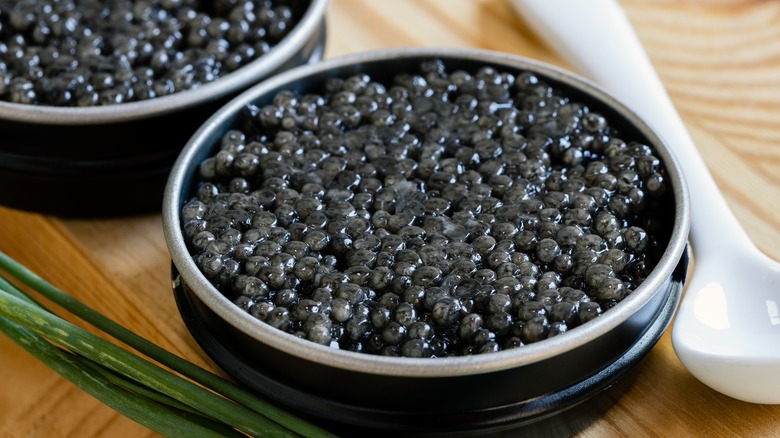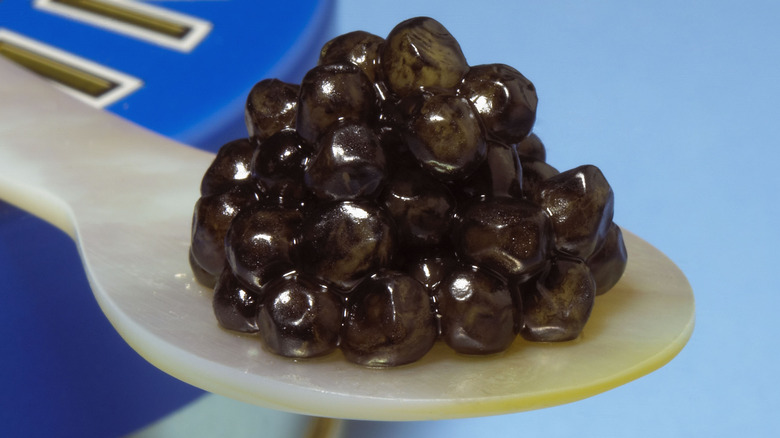Expert Defines The Difference Between Grade A Vs. Grade B Caviar
It might feel a little counterintuitive, considering the fact that food inflation was hitting bank accounts hard across the country last year, but one luxe food that's currently trending is caviar. It's kind of strange that caviar went from a luxury item to a TikTok snack in 2022, but open the app and you're bound to come across someone scooping up caviar with potato chips as casually as they might eat French onion dip made from a packet of powdered soup seasoning.
But if you've never tried caviar before, there's quite a bit of a learning curve. For instance, did you know that the little orange globes you find on top of sushi rolls aren't actually caviar, but salmon roe? In fact, only aged eggs from sturgeon fish can be called caviar, and everything else should be called roe, according to luxury caviar brand Petrossian. If this sounds a little confusing, don't worry. Mashed spoke to Chef Donald Young, owner of Duck Sel in Chicago, to learn about the difference between Grade A and Grade B caviar. The chef (who earned a Michelin star as executive chef of Temporis restaurant in 2017, according to Chicago Gourmet) gave us the tools we needed to really understand caviar before hopping aboard the trend.
With caviar, the grade decides how you should use it
Duck Sel owner Donald Young shared the difference between Grade A and Grade B caviar with Mashed. The grades are based on "color, uniformity, unbroken eggs, and texture," explains Young. Caviar brand Petrossian has its own grading scale, but it concurs with Young's assessment and additionally uses size, flavor, and finish as additional metrics. Size is important because it can impact both texture (like a good natural casing hot dog with its signature snap, caviar beads should "pop" when you bite into them) and flavor, and finish refers to how the flavor, aroma, and mouthfeel of the caviar lingers after it's eaten.
In the kitchen, the different grades of caviar should be used differently. "If I am topping something off with caviar, I am going to use Grade A," says Young, but "Grade B is usually really good ...I would most definitely use [it] in a butter sauce." Basically, if you're eating caviar on blini, crackers, or in another simple preparation, opt for Grade A, because you'll be able to appreciate the nuance of its texture, finish, and other characteristics; if you're cooking with caviar, go with Grade B. As for the perfect caviar to try if you're a beginner, Young says he likes Golden Ossetra, especially paired with buttery and creamy dishes, but he also praised the "incredibly unique and delicious" raspberry and parmesan notes found in Siberian caviar from The Caviar Company.

